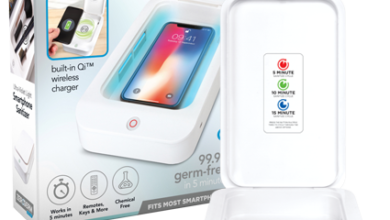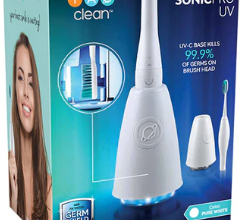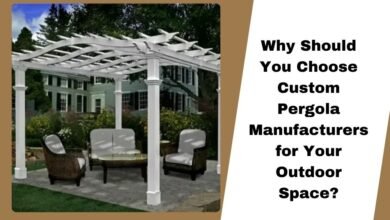Business
Everything You Need to Know Pond Lining Sheets | Comprehensive Guide for Your Benefits
Looking for the Best Pond Lining Sheets at Affordable Price

What are Pond Lining Sheets?
Pond lining sheets, also known as pond liners, are impermeable materials used to retain water in various structures like ponds, reservoirs, and lakes. These sheets prevent water seepage into the soil, helping maintain water levels and reducing the need for constant refilling. Made from a variety of materials, pond liners offer superior durability and resistance to environmental conditions.Types of Pond Lining Sheets
Pond lining sheets come in several types, each designed to meet specific requirements based on the project’s size, location, and function. Here are the most common types:1. HDPE (High-Density Polyethylene) Pond Liners
HDPE liners are one of the most commonly used pond liners due to their cost-effectiveness and durability. These sheets are highly resistant to punctures and UV radiation, making them ideal for large commercial ponds and reservoirs. HDPE is also known for its flexibility, which allows it to contour around various pond shapes and sizes.2. PVC (Polyvinyl Chloride) Pond Liners
PVC pond liners are widely used in small to medium-sized ponds. These liners offer high flexibility and are easy to install, making them a popular choice for homeowners. However, they may not have the same lifespan as HDPE liners, as they can become brittle over time when exposed to UV light.3. EPDM (Ethylene Propylene Diene Monomer) Pond Liners
EPDM liners are rubber-based and offer exceptional flexibility and puncture resistance. They are ideal for applications where the pond’s shape is irregular or requires frequent adjustments. EPDM liners are also highly resistant to weather extremes, ensuring longevity even in harsh conditions. However, they tend to be more expensive than other liner materials.4. Butyl Rubber Pond Liners
Butyl rubber liners are similar to EPDM liners but are known for their superior stretchability. This makes them a premium choice for custom-designed ponds that require extensive flexibility. Butyl liners are resistant to environmental wear and tear but come with a higher price tag.Key Advantages of Pond Lining Sheets
Pond lining sheets provide numerous benefits that make them essential in various applications. These advantages ensure long-term success in pond management and water conservation efforts:1. Water Conservation
One of the main benefits of pond liners is their ability to prevent water seepage. Without a liner, water would naturally permeate the ground, leading to significant losses over time. With the use of a high-quality pond liner, water can be conserved, minimizing the need for constant refilling and reducing overall water consumption.2. Prevention of Soil Erosion
In unlined ponds, soil erosion can lead to contamination of the water body, reducing its effectiveness and potentially harming aquatic life. Pond liners create a barrier that keeps soil particles from entering the water, maintaining clarity and quality.3. Flexibility in Design
Pond lining sheets can be adapted to various shapes and sizes, offering design flexibility for different projects. Whether it’s a small garden pond or a large commercial reservoir, liners can be tailored to meet the needs of any space.4. Durability and Resistance
Pond liners are designed to withstand a range of environmental conditions. They are resistant to UV rays, temperature fluctuations, and punctures. This durability ensures that the pond lining remains intact for several decades without the need for frequent repairs or replacements.5. Environmental Safety
Modern pond lining sheets are made from eco-friendly materials that do not leach harmful chemicals into the water. This makes them safe for aquatic life and plant growth, ensuring a balanced ecosystem.Applications of Pond Lining Sheets
Pond lining sheets are used across a wide range of industries. Here are some of the most common applications:1. Agricultural Ponds
In agriculture, maintaining a consistent water supply is essential for crop irrigation. Pond liners play a crucial role in storing water in agricultural ponds, ensuring that there is enough water available during dry seasons. These liners help conserve water, minimize losses due to seepage, and optimize the irrigation process.2. Aquaculture Ponds
Aquaculture relies on high-quality water bodies for the breeding and growth of fish, shrimp, and other aquatic species. Pond liners prevent toxic leachates from entering the water, ensuring a safe and controlled environment for aquatic life. By using pond liners, aquaculture farmers can optimize production and maintain healthier stocks.3. Decorative Ponds and Water Features
For homeowners and landscape designers, pond lining sheets offer a practical solution to create aesthetically pleasing water features. Lining decorative ponds with waterproof sheets ensures clean water, prevents leakage, and helps maintain the pond’s overall beauty.4. Industrial Water Reservoirs
Industries often need large reservoirs to store water for various processes. Pond liners in industrial applications provide an efficient way to manage large volumes of water without the risk of contamination or seepage. Liners ensure that the water remains clean and contained.5. Landfills and Wastewater Treatment
Pond liners are not limited to traditional ponds; they are also used in landfills and wastewater treatment facilities to prevent toxic materials from seeping into the soil and groundwater. In these environments, the durability and chemical resistance of pond liners are crucial to ensuring environmental safety.How to Choose the Right Pond Lining Sheet
Choosing the right pond lining sheet depends on several factors, including the size and depth of the pond, the environmental conditions, and the type of application. Here are a few tips to help make the best decision:1. Consider the Material
Different materials offer different benefits. HDPE liners are suitable for large-scale projects due to their durability, while EPDM is ideal for ponds with irregular shapes. For homeowners, PVC may be the most cost-effective solution.2. Evaluate the Thickness
Thicker liners tend to be more durable and offer better protection against punctures. However, the thickness of the liner should match the application. For instance, small decorative ponds may not require as thick a liner as large agricultural reservoirs.3. Check UV and Chemical Resistance
If the pond is exposed to direct sunlight or chemicals, choose a liner with high UV and chemical resistance. This will ensure the liner’s longevity and effectiveness.4. Installation and Maintenance
Ensure that the liner you choose is easy to install and maintain. Some liners require professional installation, while others can be placed by homeowners. Proper maintenance also prolongs the life of the liner.What are Pond Lining Sheets?
Pond lining sheets, also known as pond liners, are impermeable materials used to retain water in various structures like ponds, reservoirs, and lakes. These sheets prevent water seepage into the soil, helping maintain water levels and reducing the need for constant refilling. Made from a variety of materials, pond liners offer superior durability and resistance to environmental conditions.Types of Pond Lining Sheets
Pond lining sheets come in several types, each designed to meet specific requirements based on the project’s size, location, and function. Here are the most common types:1. HDPE (High-Density Polyethylene) Pond Liners
HDPE liners are one of the most commonly used pond liners due to their cost-effectiveness and durability. These sheets are highly resistant to punctures and UV radiation, making them ideal for large commercial ponds and reservoirs. HDPE is also known for its flexibility, which allows it to contour around various pond shapes and sizes.2. PVC (Polyvinyl Chloride) Pond Liners
PVC pond liners are widely used in small to medium-sized ponds. These liners offer high flexibility and are easy to install, making them a popular choice for homeowners. However, they may not have the same lifespan as HDPE liners, as they can become brittle over time when exposed to UV light.3. EPDM (Ethylene Propylene Diene Monomer) Pond Liners
EPDM liners are rubber-based and offer exceptional flexibility and puncture resistance. They are ideal for applications where the pond’s shape is irregular or requires frequent adjustments. EPDM liners are also highly resistant to weather extremes, ensuring longevity even in harsh conditions. However, they tend to be more expensive than other liner materials.4. Butyl Rubber Pond Liners
Butyl rubber liners are similar to EPDM liners but are known for their superior stretchability. This makes them a premium choice for custom-designed ponds that require extensive flexibility. Butyl liners are resistant to environmental wear and tear but come with a higher price tag.Key Advantages of Pond Lining Sheets
Pond lining sheets provide numerous benefits that make them essential in various applications. These advantages ensure long-term success in pond management and water conservation efforts:1. Water Conservation
One of the main benefits of pond liners is their ability to prevent water seepage. Without a liner, water would naturally permeate the ground, leading to significant losses over time. With the use of a high-quality pond liner, water can be conserved, minimizing the need for constant refilling and reducing overall water consumption.2. Prevention of Soil Erosion
In unlined ponds, soil erosion can lead to contamination of the water body, reducing its effectiveness and potentially harming aquatic life. Pond liners create a barrier that keeps soil particles from entering the water, maintaining clarity and quality.3. Flexibility in Design
Pond lining sheets can be adapted to various shapes and sizes, offering design flexibility for different projects. Whether it’s a small garden pond or a large commercial reservoir, liners can be tailored to meet the needs of any space.4. Durability and Resistance
Pond liners are designed to withstand a range of environmental conditions. They are resistant to UV rays, temperature fluctuations, and punctures. This durability ensures that the pond lining remains intact for several decades without the need for frequent repairs or replacements.5. Environmental Safety
Modern pond lining sheets are made from eco-friendly materials that do not leach harmful chemicals into the water. This makes them safe for aquatic life and plant growth, ensuring a balanced ecosystem.Conclusion
Pond lining sheets are a vital investment for anyone managing water bodies, whether for agricultural, commercial, or aesthetic purposes. The right pond liner not only conserves water but also maintains the integrity of the pond and its ecosystem. By understanding the different types of liners and their benefits, you can make an informed decision to ensure the long-term success of your project.



